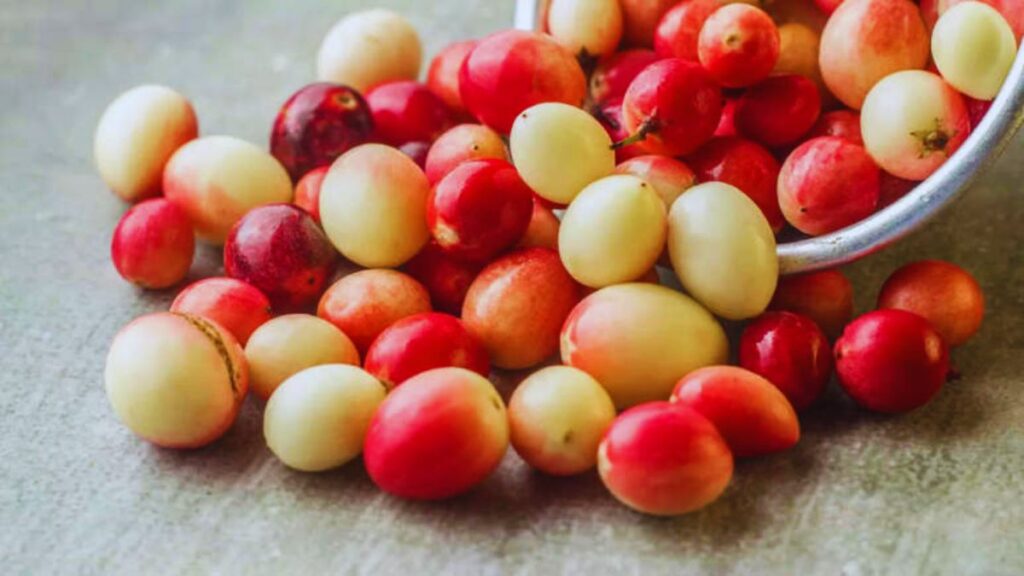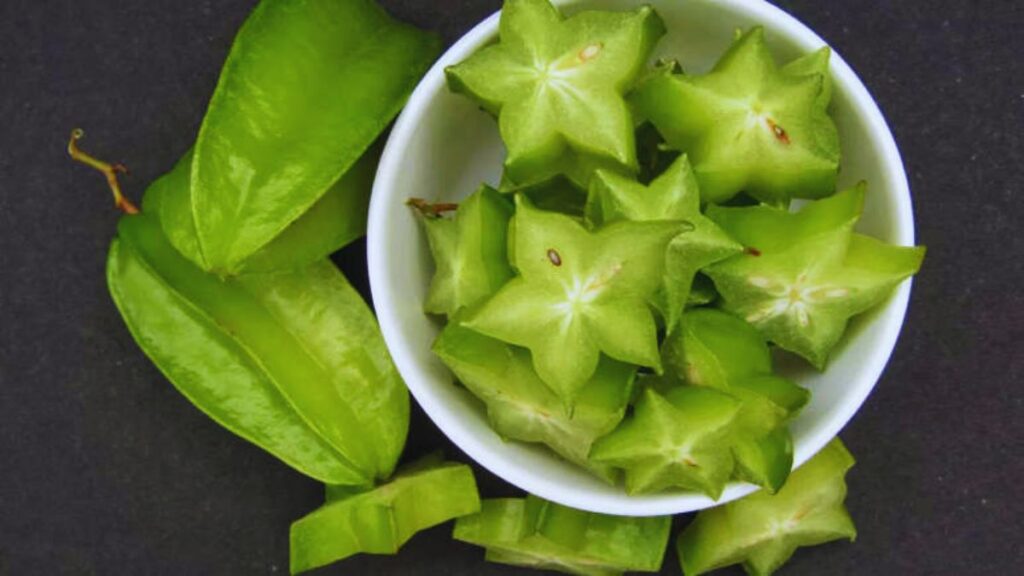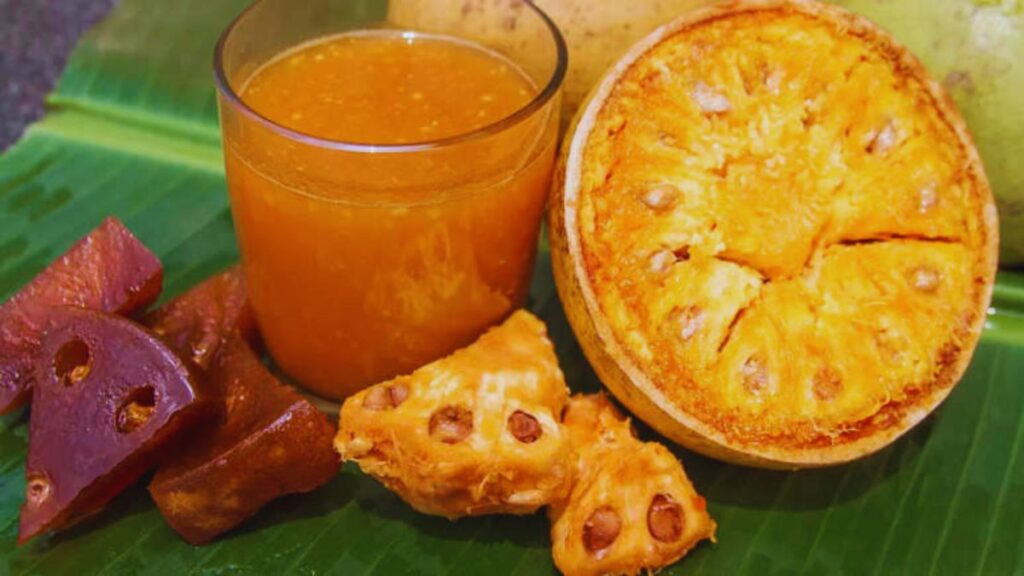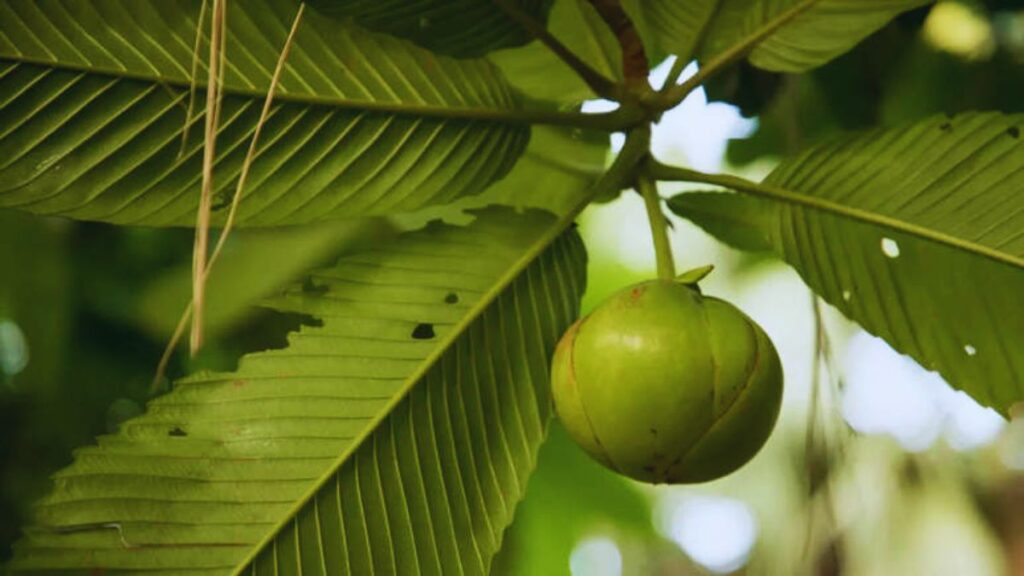When we think of fruits, common names like apples, bananas, and mangoes instantly come to mind. But beyond these popular choices lies a world of rare and forgotten fruits that were once an integral part of Indian kitchens and Ayurvedic healing. These traditional fruits, though slowly disappearing from modern diets, are nutritional treasures rich in vitamins, antioxidants, and unique flavors. Interestingly, in some parts of India, these ancient fruits are still cherished in curries, pickles, and chutneys.
Let’s rediscover these lost gems and learn how to enjoy them today.
5 Rare Indian Fruits That Are Secret Ayurvedic Superfoods
1) Pomelo
Chakotra, also known as pomelo, is one of the largest citrus fruits found in India. It resembles a giant grapefruit but is milder, sweeter, and less acidic. Packed with vitamin C, antioxidants, and potassium, this fruit helps in boosting immunity, improving digestion, and regulating blood pressure. Being low in calories and rich in hydration, it’s an excellent choice for detox diets. It is specifically found in the states of Uttar Pradesh, Bihar, and the southern states of Karnataka and Kerala.
How to Eat: Peel off the thick rind, remove the membrane, and enjoy the juicy pulp with a dash of black salt.
- You can also blend it with honey and ginger for a refreshing vitamin-rich juice.
- For a modern twist, add its segments to salads with cucumber, mint, and roasted peanuts for a tangy, crunchy mix.

2) Bengal Currant
The Bengal Currant, locally known as Karonda, is a small berry-like fruit with a tart, tangy flavor and numerous medicinal benefits. Rich in iron and vitamin C, it helps increase haemoglobin levels and boosts immunity. In traditional Ayurvedic medicine, Karonda was used to manage diabetes and inflammation. Its antioxidant and anti-inflammatory properties make it a true superfruit.
How to Eat: Eat it fresh with black salt or a sprinkle of red chili powder for a zesty snack.
- It’s also popularly used in tangy pickles made with mustard seeds and oil.
- You can prepare a sweet-and-spicy chutney using jaggery, ginger, and spices, or turn the ripe fruit into jam or jelly.

3) Star Fruit
Star Fruit, or Kamrakh, is easily recognizable by its distinct five-pointed star shape when sliced. This tropical fruit has both sweet and sour varieties and is known for being low in calories and rich in vitamin C, dietary fiber, and polyphenols. It helps strengthen immunity, improve digestion, and reduce oxidative stress in the body. It is commonly found in the warmer, southern parts of the country, stretching from Kerala to West Bengal.
How to Eat: Simply wash and slice the fruit — no peeling needed!
- Sprinkle a little black salt or chat masala to further enhance its flavor.
- It can also be turned into a tangy chutney with green chilies, garlic, and jaggery or used in fresh salads for a delightful sweet-sour twist.

4) Wood Apple
Wood Apple, or Bael, is a sacred and medicinal fruit deeply rooted in Indian tradition and Ayurveda. With its tough shell and aromatic pulp, it offers a unique blend of sweetness and tanginess. Rich in vitamin C, antioxidants, and cooling properties, it helps prevent heatstroke, eases constipation, and supports gut health. It’s especially beneficial during hot summer months. This fruit is commonly found in the arid regions across Maharashtra, MP, UP, Andhra Pradesh, Karnataka & Tamil Nadu.
How to Eat: Break open the hard shell, scoop out the pulp, and mash it with water.
- Strain and mix with jaggery, black salt, and a pinch of cardamom to make a refreshing Bael sherbet.
- It can also be transformed into a tangy chutney perfect for pairing with Indian meals.

5) Elephant Apple
Elephant Apple, locally called Chalta, is a large, round fruit known for its fibrous, tangy pulp. Abundant in vitamin C, it supports immunity, skin health, and digestion. Its high fiber content aids in maintaining a healthy gut, while the antioxidants protect the body from oxidative stress and inflammation. It is native to the region of sub-Himalayan tract and particularly concentrated in the northeast and eastern parts of the country.
How to Eat: This fruit is often used in chutneys, cooked with jaggery, ginger, and aromatic spices.
- In some regions, it’s turned into pickles with mustard oil and seeds.
- When fully ripe, its pulp can be blended with sugar and mint to make a cooling, rejuvenating summer drink.

India’s culinary and Ayurvedic heritage is filled with nutrient-rich fruits that have sadly faded from modern diets. From the citrusy Chakotra to the tangy Elephant Apple, these forgotten superfruits not only revive age-old flavors but also bring immense health benefits.
Reintroducing them into our meals — through juices, pickles, or chutneys — is a delicious way to reconnect with India’s natural abundance and traditional wellness.



